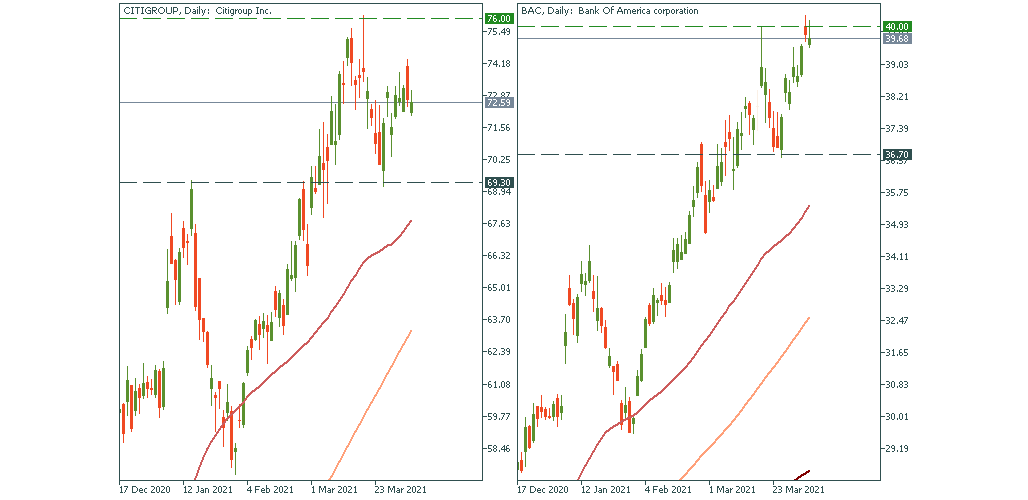BAC and Citi: which one is a better buy?
What’s going to happen?
Bank of America and Citigroup will report their earnings in Q1’2021 on April 15 before the market open.
What to do with it?
If BAC and Citi outperform market expectations, it’s possible that the price of their respective stocks rises.
Therefore, if you’re convinced that the results will be better than thought, you buy before the reporting date of April 15 in the expectation that the price will rise. Once it goes higher, you sell.
Are we convinced that these banks will outperform?
The fundamental factor that supports the rising profits and, consequently, stock value growth for both banks is the improving economic outlook. Primarily, in the US, and globally. One of the specific elements is the rising US Treasury yields which have a direct influence on the banks’ own interest rates and, hence, profits. However, this factor may not have reached its full momentum in Q1’2021 as it wasn’t yet clear during the first months of the year how the situation will unroll. That’s why this factor is more about the mid-term and long-term. However, that doesn’t mean that observers won’t include that into their reaction to the coming release of the earnings data on April 15.
Bank of America, Citigroup, and other stocks are available in FBS Trader
What’s expected?
The estimated EPS of BAC for Q1’2021 is $0.63; the one of Citi - $2.24.
Take into account the differences now: Citi brought much stronger data in the last two quarters of 2020 against the forecasts than the Bank of American did against the market’s projections. In the meantime, Citi’s stock looks more vulnerable responsive to the downward pressures while BAC is making all-time highs.
On the one hand, it makes it easier to plan for an optimistic scenario of Citi: it has its pre-virus high of $82 to be reached by bulls. The Bank of America, on the other hand, is already exploring uncharted upside territories. Therefore, we can only extrapolate that a better-than-thought earnings report may push its stock further above – into the area of $43 per share.
